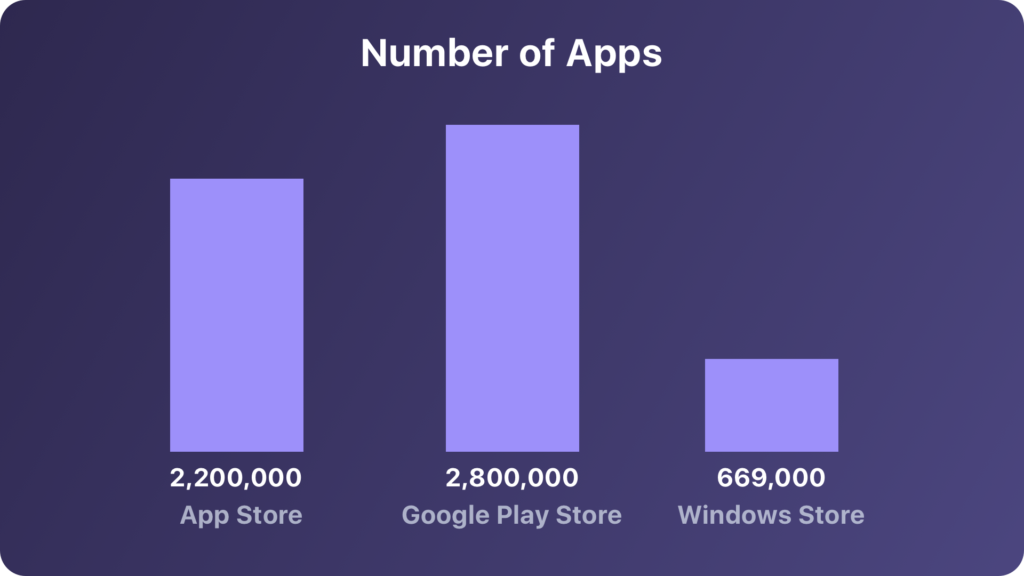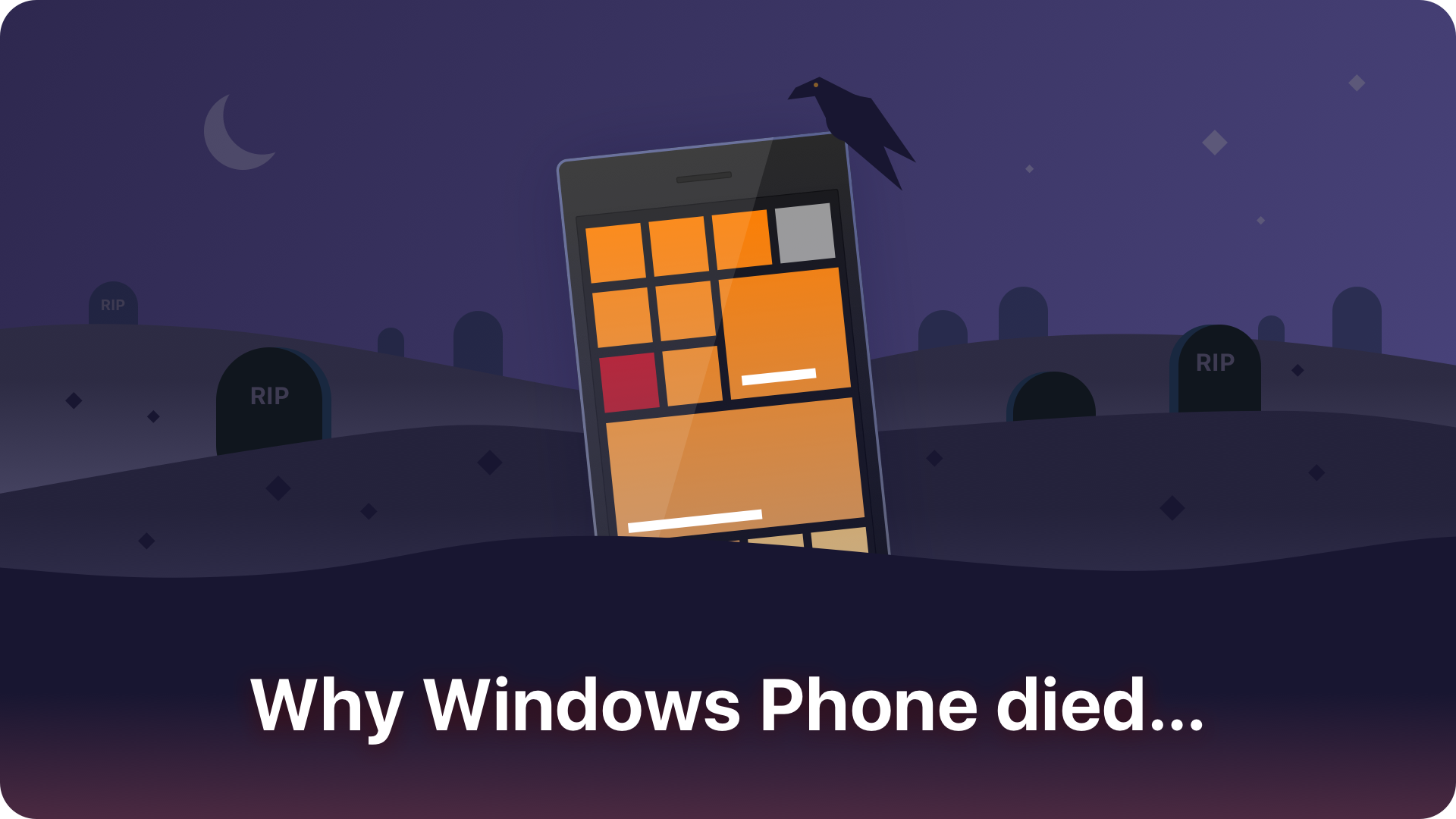Vincent Van Gogh, Claude Monet, Paul Gauguin and Windows Phone have more in common than we may think. They all have died without fame, but they were forerunners of the new.
History of Metro UI
I remember very well the first Windows Phone devices. iOS and Android were quite fresh, but have already dominated the mobile market. However, there was still hope to challenge them. Metro (later Modern) UI was a visual framework that was a chance for Microsoft to become a serious player in the Smartphone’s OS Industry.
The history of this UI style is quite long. The ancestors of the “tiled UI” were already presented in products like Media Center and Zune (Microsoft’s competitor of iPod). However, the final version of the Metro UI was presented a few years later. It was inspired by Swiss Design principles. Fresh, minimalistic, content focused, let’s remind the core principles of Metro:
Metro is our code name for our design language.
We call it Metro because it’s modern and clean.
It’s fast and in motion.
It’s about content and typography.
And it’s entirely authentic.
From Today’s perspective, Metro UI was a trendsetter. When it appeared Android was experimenting with its visual elements and various inconsistent UI styles done by device manufacturers. iOS was considered as very attractive with its pixel perfect skeuomorphic approach. Now, almost all of principles introduced by Metro are applied for Google’s and Apple’s creations.
However, users were not ready for this kind of Graphical Interface. Windows Phone devices design was quite attractive, but when you had to start to interact with the UI, you felt confused. It was not familiar, you had to learn how to use it.
The Reason Metro UI failed
I think that people would accept the lack of chrome in that time, but they could not accept to learn all interactions with the UI from the beginning. Users were familiar with quite similar GUIs of iOS and Android (this was a time, where a lot of Android apps looked like copies of these from iPhone) and there was no rational reason to start learning something different.
While Metro UI was a fresh approach, but it did not solve any problem. It was not so much simpler or convenient. It looked like Microsoft insisted just on making something different than their competitors, but forgot about the right research.
Metro was too original. It did not matter if it had good usability. The truth is that people do not want completely new things. They want the familiar ones done differently. This is one of the two core reasons why Windows Phone failed. Microsoft had almost fixed this issue with Windows 10, but now it is too late.
Developers, developers, developers… where are the apps?
Apps are the last stand. They are the reasons why iPhone had become so engaging device. Tons of free software let creators of Android make it very popular. So, what was the situation of the Windows Phone’s ecosystem?
Steve Ballmer loved to repeat how developers are important for his company. However, this was not so relevant when it comes to its mobile os.
At first, Microsoft was convinced that users do not need apps itself, but their content. Windows Phone was designed to become the hub of this content. But, App Developers were not satisfied by this approach, so they insisted the company make some changes. This is why many titles were not released or were delayed.
Like the in the real world people buy things for their brands, in the digital environment, it is the same. Mobile OS to become popular needs the top apps. Unfortunately, many famous titles were not available on Windows Phone’s Marketplace.
What is more, Google did not release their official apps for the platform. It was one of the key elements that foreshadow the failure.

Game of Thrones in Redmond
I have heard a story that Microsoft would have released a successful tablet with a dedicated version of Windows years before the iPad. But, the directors of the MS Office Software was not interested in rewriting their product for the touch screens. This is why we have never seen such device before Apple’s.
This internal wars in the corporations are often the reason their products fail. Confronted managers forgot that the company that has a culture of cooperation with a clear vision will be able to dominate the market. There was a time when Microsoft remembered this rules, but their victory has become a failure.
It is possible that the different departments of the giant from Redmond were absorbed by fighting with each other. They did not think about the final product and its users. This was a next element of the Windows Phone failure.
Technology over users
If you ever had Windows Phone 7 device you surely remember the huge disappointment caused by lack of update to the next version.
Microsoft’s engineers worked fast and hard to release Windows Phone 8. They decided to implement the more modern core of the System. However, it was not compatible with the previous one. Engineers decided not to implement additional compatibility features because of the tight deadlines.
Every user who purchased a phone with OS version 7 did not get an update to 8. Fortunately, if you purchased Windows Phone 8 device, you could launch apps from 7.
Engineer won, they could release the final version of the OS in time. But, users have got a bit angry. Creators of the Windows Phone lost it’s credibility in their eyes.
The Metro UI Legacy
Windows Phone failed with its visual framework. However, the principles initiated then survived and helped to shape the modern UI styles.
If you remember the manifesto of the Metro UI: minimalism, content over chrome, motion design and focus on typography. You clearly see that these guidelines apply to the two major systems Android with its Material Design, and of course iOS.
Now, look how iOS is evolving. It is flat, it has rich beautiful typography. The 11 version of Apple OS will even have similar large headlines in the apps like the Metro UI ones.
Material Design Typography guidelines look pretty much like those from Windows Phone. Its iconography is a set of pictograms – like ones from the Metro UI.
Windows Phone was a trendsetter, but it died without gaining fame. Although this design framework failed, designers use its rules to create marvelous UI designs.
There is a hope for the redemption of Microsoft’s Design
We may clearly think that Microsoft should give up their experiments this visual design. However, they have introduced a really inspiring concept of Design System called “Fluent”.
Fluent Design System looks very promising. It looks modern but also familiar. It is even prepared for VR/AR Interfaces.
I would even risk a statement that it has a chance to become a successor of Material Design.
To conclude
Windows Phone failed because of many mistakes. They were all connected with the UX Design:
- Metro UI was too original. It was not familiar to users.
- Microsoft’s third party app ecosystem was poor.
- There were more wars inside Microsoft that thinking about the final product.
- Technology won over user needs. Windows Phone 7 devices were not updated to 8th version.
It is good to know all of these points. We all should learn from the history to never let it repeat again. There is still a hope for Microsoft to make the positive impact with its products.
If you are like me and you constantly search for the unique insight into UX & UI Design, I am happy to announce that I am there is a community around the UX Misfit blog. If you would like to read and share some inspiring stuff with people like you – please join UX Misfits Community on Facebook.
Similar Articles:
1. Fluent Design System – Why You Should Care About The New UI Style
2. Skeuomorphic design is good. Minimalism is overrated.




